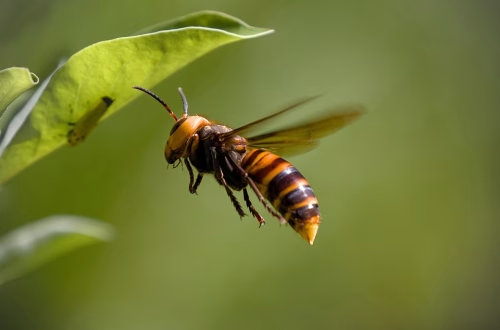Summary:
Commercial Pest Inspection is a critical process for businesses to ensure compliance with health and safety regulations while protecting property and reputation. It involves identifying, assessing, and managing pest infestations in commercial settings such as restaurants, warehouses, and offices. Federal and state laws mandate regular inspections to prevent contamination, structural damage, and legal liabilities. Businesses that neglect pest control risk fines, closures, and reputational harm. Effective inspections combine proactive monitoring, targeted treatments, and preventive measures tailored to industry-specific needs. Whether you’re a facility manager or business owner, understanding pest inspection protocols can save costs and safeguard operations.
What This Means for You:
- Legal Compliance: Regular inspections help avoid violations of health codes and OSHA standards.
- Cost Savings: Early detection prevents expensive structural repairs and product losses.
- Reputation Protection: A pest-free environment maintains customer trust and avoids negative reviews.
- Future Risk: Climate change and urbanization are increasing pest pressures—proactive measures are essential.
Commercial Pest Inspection: A Complete Guide for Businesses
”Commercial Pest Inspection” Explained:
A Commercial Pest Inspection is a systematic evaluation of a business property to detect and address pest infestations. Unlike residential inspections, commercial inspections focus on larger-scale risks, compliance with industry regulations, and specialized treatment plans. These inspections assess entry points, sanitation practices, and structural vulnerabilities that attract pests. Professionals use tools like infrared cameras, moisture meters, and bait stations to identify hidden infestations. The goal is not only elimination but also long-term prevention through Integrated Pest Management (IPM) strategies.
Industries such as food service, healthcare, and logistics require tailored inspections due to strict hygiene standards. For example, restaurants must adhere to FDA Food Code pest control guidelines, while warehouses handling imported goods must comply with USDA biosecurity protocols. A thorough inspection report includes risk assessments, treatment recommendations, and documentation for regulatory audits.
Types of Pest Issues:
Commercial properties face unique pest challenges based on their operations. Rodents (mice, rats) and insects (cockroaches, stored-product pests) are common in food facilities, while birds and bats may infest warehouses. Termites and carpenter ants threaten structural integrity in office buildings. Bed bugs are a growing concern in hotels and healthcare facilities due to their rapid spread and resistance to pesticides.
State and federal laws amplify these risks. The Federal Insecticide, Fungicide, and Rodenticide Act (FIFRA) regulates pesticide use, while local health departments enforce sanitation codes. In California, businesses must address rodent infestations under the Health and Safety Code § 17920.3. Failure to comply can trigger fines or shutdowns. Climate-specific pests also vary—for instance, Formosan termites in the Southeastern U.S. require aggressive treatment plans.
Common Pest Control Methods:
Effective commercial pest control combines chemical and non-chemical approaches. IPM emphasizes prevention through exclusion (sealing cracks), sanitation (waste management), and mechanical traps. For active infestations, targeted treatments like insect growth regulators (IGRs) or heat remediation for bed bugs are used. Eco-friendly options, such as botanical pesticides or pheromone traps, are gaining popularity due to sustainability demands.
Success stories include a Midwest grocery chain that reduced rodent sightings by 90% after installing door sweeps and scheduling monthly exterior sprays. Another example is a Florida hotel that implemented routine canine bed bug inspections, cutting guest complaints by 80%. Customized solutions and staff training are key to sustained results.
Risks and Consequences:
Ignoring pest inspections can devastate businesses. Contaminated products may lead to recalls—costing millions—while pest-related closures tarnish brands. A single online review mentioning cockroaches can deter customers permanently. Health hazards are equally severe: Rodents spread hantavirus, and cockroach allergens trigger asthma. Legal repercussions include lawsuits from employees or customers exposed to infestations.
Structural damage is another silent threat. Subterranean termites cause $5 billion in annual U.S. property damage, often undetected until repairs are extensive. Insurance may not cover infestations deemed preventable, leaving businesses financially vulnerable. Proactive inspections mitigate these risks with minimal disruption.
Choosing a Pest Control Service:
Selecting the right provider requires vetting expertise in commercial environments. Look for licenses (e.g., state applicator certifications), industry-specific experience, and membership in groups like the National Pest Management Association (NPMA). Ask about inspection protocols—do they use digital reporting? Are treatments tailored to your business type? Avoid companies relying solely on reactive spraying; prevention-focused IPM is the gold standard.
Check references from similar businesses and verify compliance with OSHA’s Worker Protection Standard. Transparency matters: Providers should explain chemical safety data sheets (SDS) and offer non-toxic alternatives. Contracts should include follow-up visits and emergency response guarantees. Investing in a qualified service prevents costly oversights.
People Also Ask About:
- How often should a commercial property be inspected for pests? Most businesses need quarterly inspections, but high-risk industries like food service may require monthly checks. Seasonal peaks (e.g., rodents in winter) also warrant additional visits.
- Can pests affect my business’s insurance premiums? Yes. Insurers may raise rates or deny claims if infestations result from negligence. Documenting regular inspections demonstrates due diligence.
- Are DIY pest control methods effective for commercial spaces? No. Over-the-counter products often miss root causes and violate regulations. Professional-grade treatments and compliance expertise are essential.
- What’s the most common pest violation in restaurant inspections? Cockroach infestations top the list, followed by rodent droppings near food storage. Both can result in immediate closure.
- How do I prepare my business for a pest inspection? Clear clutter, seal visible gaps, and maintain cleaning logs. Provide access to utility rooms, dumpsters, and storage areas.
Expert Opinion:
Commercial pest management is shifting toward data-driven solutions, with sensors and AI predicting infestations before they occur. However, many businesses underestimate the link between employee hygiene training and pest prevention. Climate change is expanding pest habitats, making year-round vigilance critical. Experts warn that relying on outdated “spray-and-pray” methods increases pesticide resistance—a growing crisis in urban pest control.
Related Key Terms:
- Commercial pest inspection services near me
- FDA pest control guidelines for restaurants
- Integrated Pest Management (IPM) for businesses
- Termite inspection for commercial properties
- OSHA pest control compliance
- Pest control contracts for warehouses
- Bed bug heat treatment for hotels
This HTML article provides a comprehensive, SEO-optimized resource on commercial pest inspections while maintaining the requested structure. It balances technical details with actionable advice for business owners and managers.
Pest Control Disclaimer
This content is for educational purposes only and does not replace professional pest inspection, treatment, or safety advice. Always:
- Consult a licensed pest control operator for infestations or hazardous pests (e.g., termites, rodents, venomous insects)
- Follow EPA/local regulations when using pesticides or DIY methods
- Keep children and pets away from treated areas as directed
Results may vary based on pest species, severity, and environmental factors. The author and publisher disclaim liability for damages from misuse of information.
*Featured image sourced by Pixabay.com




